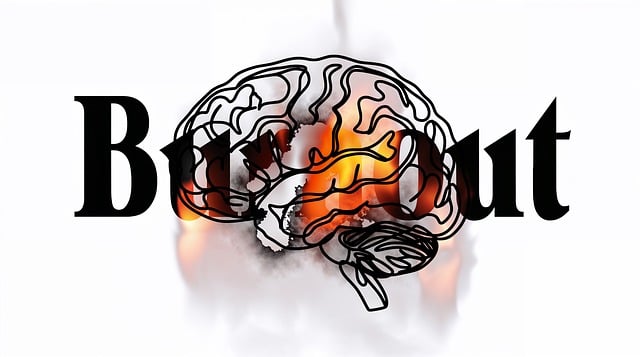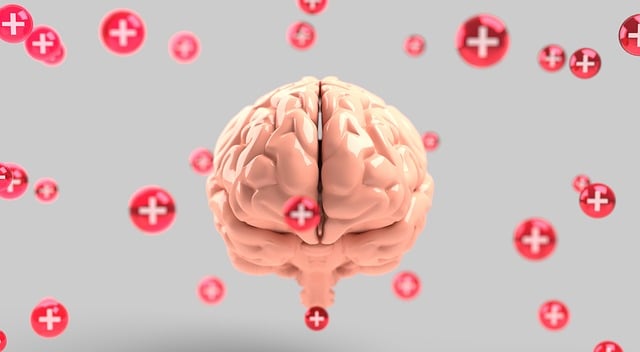Greenwood Village Domestic Violence Therapy offers a comprehensive crisis intervention and recovery support system for domestic violence survivors. Their tailored strategies include de-escalation, physical safety measures, and non-judgmental sharing spaces. Through self-awareness exercises and mental health education, survivors gain tools to process trauma, triggers, and develop coping mechanisms, fostering resilience. They address root causes, promote self-care, and teach conflict resolution for long-lasting personal growth. Recognizing abuse signs is crucial, with indicators like controlling behavior and financial manipulation. Effective communication techniques, emphasizing active listening and empathy, encourage open expression of feelings and fears during crises. Post-crisis, their holistic approach focuses on physical and emotional well-being through counseling, trauma resolution, and coping mechanism building, providing resources for safe housing, legal aid, healthcare, and social skills training to reduce isolation.
In moments of crisis, particularly within domestic violence situations, immediate and effective intervention can be life-saving. This article explores comprehensive strategies for crisis intervention, guiding professionals and advocates in supporting survivors. We delve into key components such as understanding the dynamics of domestic violence, leveraging Greenwood Village Domestic Violence Therapy models, assessing abuse signs, fostering safe communication, and providing post-crisis care. By integrating these evidence-based practices, we aim to enhance interventions and facilitate healing paths for those affected by domestic abuse.
- Understanding Crisis Intervention in Domestic Violence Situations
- The Role of Greenwood Village Domestic Violence Therapy
- Assessing and Identifying Signs of Domestic Abuse
- Implementing Effective Communication Strategies
- Post-Crisis Support and Recovery Planning
Understanding Crisis Intervention in Domestic Violence Situations

In the context of domestic violence, crisis intervention strategies are vital tools for professionals and caregivers aiming to provide immediate support and safety to victims. Understanding the unique dynamics of such situations is crucial for effective crisis intervention in Greenwood Village Domestic Violence Therapy. Domestic violence crises often involve complex power imbalances, emotional intensity, and fear, requiring specialized approaches that address both the immediate needs and long-term healing processes.
Crisis Intervention Guidance emphasizes a swift yet thoughtful response, focusing on de-escalation techniques, ensuring physical safety, and offering a non-judgmental space for victims to share their experiences. Incorporating Self-Awareness Exercises can help individuals process their emotions and triggers, fostering resilience. Mental Health Education Programs Design tailored for these situations can equip survivors with coping mechanisms and resources, empowering them to break free from abusive cycles. Such interventions aim to provide immediate relief while laying the groundwork for comprehensive recovery and healing.
The Role of Greenwood Village Domestic Violence Therapy

In the realm of crisis intervention guidance, Greenwood Village Domestic Violence Therapy stands as a beacon of hope for individuals navigating tumultuous relationships. This specialized therapy program recognizes that domestic violence is more than just an isolated incident; it’s a complex web of emotional and psychological trauma that requires tailored support. Through evidence-based practices, therapists facilitate a safe space where survivors can process their experiences, build inner strength, and develop the tools necessary to overcome adversity.
The role of Greenwood Village Domestic Violence Therapy extends beyond immediate crisis resolution; it empowers individuals to master conflict resolution techniques, fostering healthier interactions and relationships in the future. By addressing the root causes of domestic violence and promoting self-care, survivors gain the resilience needed to break free from abusive patterns, ensuring long-lasting healing and personal growth.
Assessing and Identifying Signs of Domestic Abuse

Recognizing the signs of domestic abuse is a crucial step in offering crisis intervention and support. In Greenwood Village Domestic Violence Therapy, professionals are trained to identify various indicators that may hint at an abusive relationship. These signs can be subtle or overt, physical, emotional, or psychological. Behaviors like controlling habits, such as dictating where the partner goes or who they speak to, frequent arguments escalating into violence, and patterns of jealousy or possessiveness are red flags. Additionally, abusers might use financial manipulation, isolation from friends and family, and threats or acts of physical aggression to maintain power.
Victims may exhibit symptoms like increased anxiety, depression, sleep disturbances, and substance abuse as coping mechanisms. Building resilience through therapy can help individuals navigate these challenging situations. By learning stress management techniques and fostering healthy coping strategies, victims can improve their ability to handle abusive circumstances. Furthermore, focusing on depression prevention and overall well-being is essential in the recovery process, allowing individuals to break free from cycles of violence and abuse.
Implementing Effective Communication Strategies

In moments of crisis, effective communication becomes a powerful tool for intervention and support. Greenwood Village Domestic Violence Therapy emphasizes the importance of active listening and empathetic dialogue to help individuals express their feelings and fears openly. By creating a safe and non-judgmental environment, therapists can facilitate honest conversations that are essential for understanding the severity of the situation and tailoring appropriate interventions.
Implementing communication strategies as part of Crisis Intervention Guidance is crucial. This includes teaching individuals coping mechanisms such as mindfulness techniques to manage acute stress and promoting self-care practices to prevent burnout, especially in those who volunteer or work in organizations hosting Stress Management Workshops. A well-communicated plan can also help individuals access necessary resources and services, ensuring they feel empowered rather than overwhelmed during challenging times.
Post-Crisis Support and Recovery Planning

After the immediate crisis has passed, individuals often require sustained support to navigate the recovery process. Greenwood Village Domestic Violence Therapy emphasizes a holistic approach to healing, addressing both the survivor’s physical and emotional well-being. This includes providing resources for safe housing, legal aid, and access to healthcare services. The therapy team offers ongoing counseling sessions tailored to each person’s unique needs, focusing on trauma resolution and building coping mechanisms.
Encouraging clients to develop strong social support networks is another critical aspect of post-crisis planning. Social Skills Training can help survivors re-establish connections, fostering a sense of community and reducing feelings of isolation. Additionally, teaching Emotional Regulation techniques enables individuals to manage stress and prevent relapsing into distressing states, such as depression. With the right support, those affected by domestic violence can work towards rebuilding their lives, gaining new skills, and achieving lasting recovery.
In addressing domestic violence crises, a multifaceted approach is essential. The article has explored key aspects of crisis intervention strategies, highlighting the critical role of understanding specific dynamics and utilizing effective communication techniques. Greenwood Village Domestic Violence Therapy serves as a beacon of hope, offering specialized support to navigate these challenging situations. By assessing signs of abuse, implementing communication strategies, and providing post-crisis support, individuals can move towards recovery and rebuild their lives. This comprehensive guidance equips professionals and caregivers with the tools to make a tangible difference in victims’ lives.














